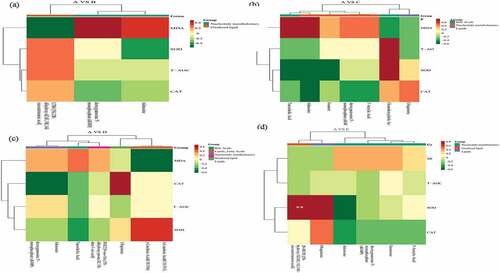Figures & data
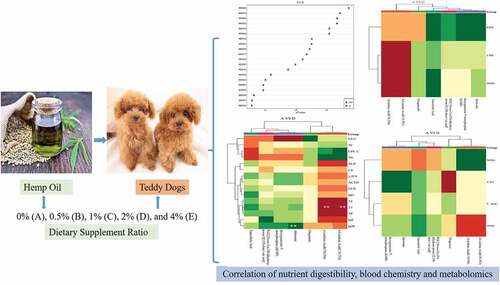
Table 1. Fatty acid composition of hemp seed oil
Table 2. Composition and nutrient level of experimental diets (Dry matter basis)
Table 3. The effect of hemp oil on the apparent nutrient digestibility of teddy dogs
Table 4. The effect of hemp oil on dog blood biochemical indexes
Table 5. The effect of hemp oil on the anti-oxidation indexes of dog serum
Figure 1. The principal component analysis (PCA) between control A and treatment B (Figure 1a), C (Figure 1b), D (Figure 1c), E (Figure 1d), and the orthogonal partial least square discriminant analysis (OPLS-DA) score (Figure 1e) and model verification (Figure f). The abscissa represents the model accuracy and the ordinate represents the frequency of model classification effect. The prediction parameters R2X and R2Y represent the interpretation rate of X and Y matrix, and Q2 represents the prediction ability of the model. When Q2 > 0.5 means effective model, and when Q2 > 0.9 represents excellent model.
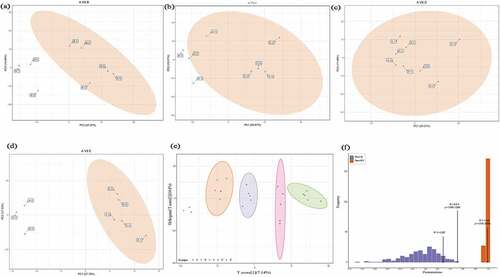
Figure 2. The statistical of differential metabolites-based VIP value between control A and treatment B (Figure 2a), C (Figure 2b), D (Figure 2c), and E (Figure 2d).
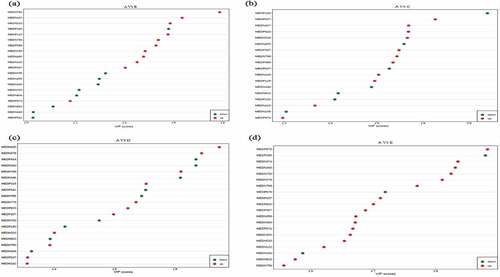
Figure 3. The pathway analysis of the detected differential metabolites between control A and treatment B (Figure 3a), C (Figure 3b), D (Figure 3c), and E (Figure 3d).
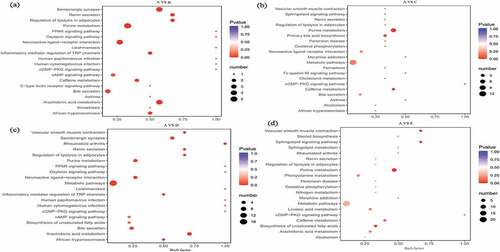
Table 6. Statistics of the different metabolites number
Table 7. Differential metabolite Kyoto encyclopedia of genes and genomes (KEGG) pathway enrichment analysis
Figure 4. The correlation between metabolomics and nutrient digestibility during control A and treatment B (Figure 4a), C (Figure 4b), D (Figure 4c), and E (Figure 4d).
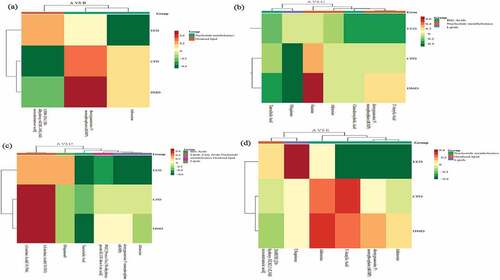
Figure 5. The correlation between metabolomics and blood biochemical index during control A and treatment B (Figure 5a), C (Figure 5b), D (Figure 5c), and E (Figure 5d).
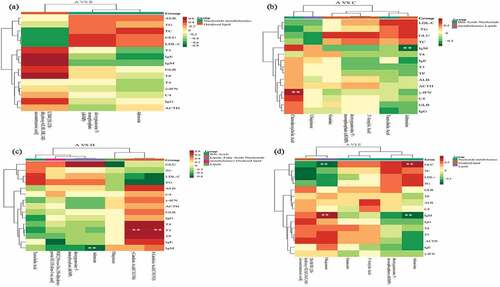
Figure 6. The correlation between metabolomics and blood antioxidant indicators during control A and treatment B (Figure 6a), C (Figure 6b), D (Figure 6c), and E (Figure 6d). A: dietary supplements 0% hemp oil in teddy dog (as control), B: dietary supplements 0.5% hemp oil in teddy dog, C: dietary supplements 1% hemp oil in teddy dog, D: dietary supplements 2% hemp oil in teddy dog and E: dietary supplements 4% hemp oil in teddy dog.
